The Tivoli Odyssey: Emperors' and Cardinals' Dreams Carved in Stone
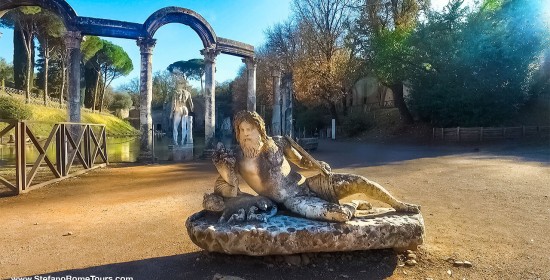
Buongiorno and welcome to Stefano Rome Tours, Rome’s leading company for private tours in Italy and Civitavecchia shore excursions. Since 2005 we have taken curious travelers to Tivoli Villas from Rome on our private tours, and on the Tivoli Post Cruise Tour from Civitavecchia. In this travel blog, we venture on a Tivoli odyssey where Emperors' and Cardinals' Dreams are Carved in Stone.
Perched on an elevated terrain, Tivoli has been a coveted summer refuge since ancient Roman times. Its irresistible charm emanates from the combination of an elevated location with vast panoramic views, a refreshing climate, and the tranquility of nature. Within this picturesque town, a mere 40 minutes from Rome, stand two architectural masterpieces that embody the grandeur and foresight of their visionary creators — Hadrian's Villa and Villa d'Este.
Separated by centuries yet united by the ambitious visions of their patrons, these magnificent structures tell the compelling tale of emperors and cardinals whose dreams were immortalized in stone. Join us on a captivating journey through Tivoli, where the enduring imprints of both emperors and cardinals await.
The Tivoli Odyssey:
Emperors' & Cardinals' Dreams Carved in Stone
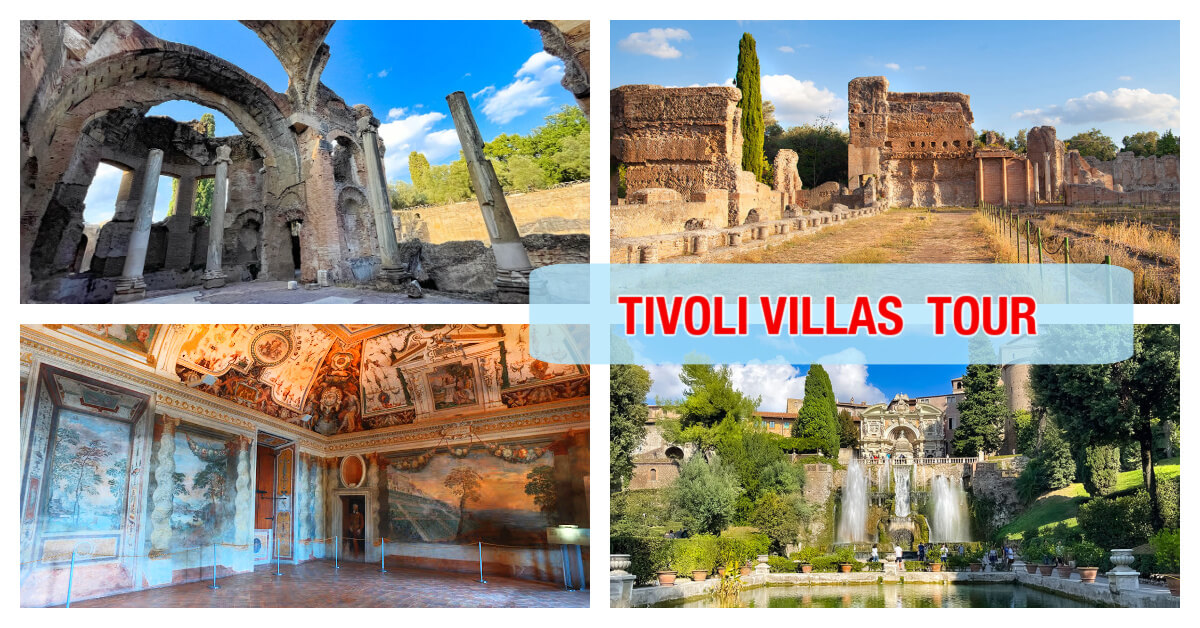
Hadrian's Villa: A Vision of Imperial Splendor
Emperor Hadrian, the 14th Emperor of Rome, ascended to the throne in 117 AD. Known for his intellectual pursuits, military prowess, and keen interest in architecture, Hadrian envisioned a retreat that would reflect the grandeur of the Roman Empire.
Hadrian created his Imperial residence on the site of a small Republican villa expanding it to about 300 acres (120 hectares), making it the largest and most opulent villa in the Roman Empire. Renowned for its architectural innovation and complexity, the villa served dual purposes, accommodating both official and recreational activities.
With numerous rooms designed for large gatherings, a permanent court, and discreet living quarters for servants connected by service tunnels, Hadrian's Villa was a bustling center of activity. The estate's self-sufficiency even allowed Hadrian to conduct imperial affairs from this elaborate residence.
Tivoli’s Serene Escape from the Bustle of Rome
Hadrian's Villa served as a retreat from the political and administrative demands of Rome. The bustling and crowded city often presented challenges for emperors who sought a respite from the pressures of governance. Tivoli, with its serene and picturesque landscape in the Tiburtine Hills, provided an ideal escape for Emperor Hadrian.
Hadrian was a complex and introspective emperor, deeply engaged in philosophy and intellectual pursuits. Emperor Hadrian's decision to build his villa in Tivoli may have been driven by a combination of practical considerations, a love for architecture, a desire for personal retreat, and the symbolic connections the location held to classical Roman culture. Hadrian's Villa stands as a remarkable testament to the emperor's multifaceted personality and his enduring impact on Roman architecture.
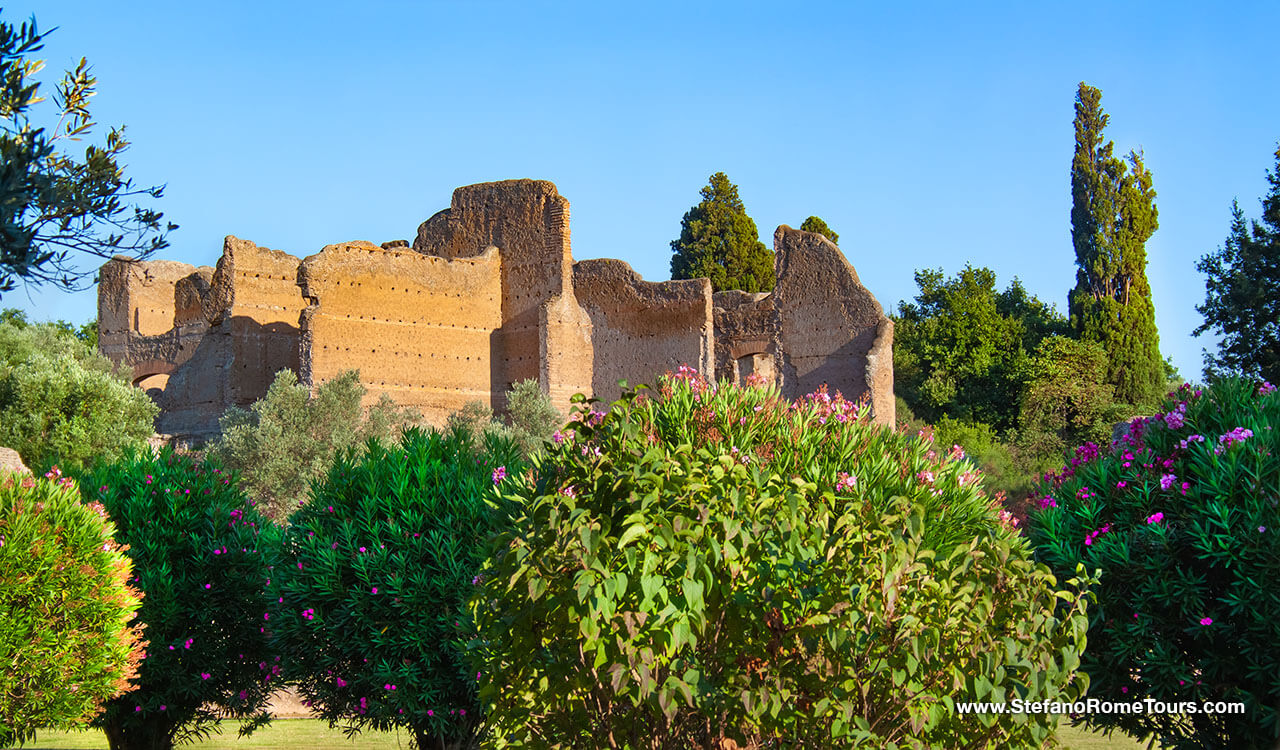
Emperor Hadrian’s Love for Architecture and Classical Culture
After conquering Greece, wealthy Romans were captivated by Hellenistic art, leading to a villa construction boom in the late Republic and early Empire. Notably, figures like Cicero and the Julio-Claudians, linked to Hadrian, embraced this trend. Augustus and Tiberius owned cliff-top villas in Capri, with Tiberius governing from his. Nero's Domus Aurea in Rome marked the zenith, featuring a vast pond, city-like structures, and expansive countryside tracts.
Hadrian was renowned for his passion for architecture and the arts. During his extensive travels throughout the Roman Empire, he gathered inspiration from various cultures and architectural styles. His Villa Adriana became a canvas where he could materialize his diverse interests and experiment with different architectural elements, incorporating Greek, Egyptian, and Roman influences.
Why Emperor Hadrian chose Tivoli for his Villa Location
Several theories surround the strategic location of Hadrian's Villa. Tivoli's rich resources, such as renowned travertine quarries, tufa, pozzolana, and lime for cement, were pivotal in the expansive construction.
Moreover, the abundant water sources in Tivoli also likely influenced Hadrian's decision to establish his imperial complex here. The region's natural springs facilitated the creation of intricate water features and aqueduct systems within the villa. Notably, the Maritime Theater and the Canopus, key features of the villa, relied on the availability of water for their design and functionality.
The villa's secluded location in Tivoli served dual purposes. Amidst Hadrian's controversial rise to power and subsequent unpopularity, the villa's isolation shielded him from criticism and aristocratic scrutiny. Simultaneously, it fulfilled Hadrian's personal desire to distance himself from Rome.
Hadrian’s Expression of Imperial Power:
The sheer scale and opulence of Hadrian's Villa served as a testament to the might and grandeur of the Roman Empire. The villa was not merely a private residence but a manifestation of imperial power, reflecting Hadrian's vision for an idealized version of the Roman world within its confines.
The sprawling complex features an eclectic mix of architectural styles inspired by Hadrian's extensive travels. The Maritime Theater, a circular structure surrounded by a moat, emulates the tranquility of an island retreat. The Canopus, a long reflecting pool flanked by statues and colonnades, pays homage to the coastal town of Canopus in Egypt.
What are the most important things to see at Hadrian’s Villa?
When visiting Tivoli, here are some of the most significant things to see at Hadrian's Villa:
Poecile:
Likely the first thing visitors notice when they arrive is the Poecile, also known as the Poikile, a large exedra or porticoed courtyard within Hadrian's Villa. It is named after a similar structure in Ancient Athens. The term "poecile" means painted or decorated, reflecting the rich ornamentation that likely adorned the area.
The Poecile features a semi-circular colonnade with a row of engaged columns against a high wall, creating an open, monumental space. The columns supported an entablature, and the central area likely had decorative elements or statues. This space may have been used for philosophical discussions or gatherings, emphasizing Hadrian's interest in Greek philosophy.
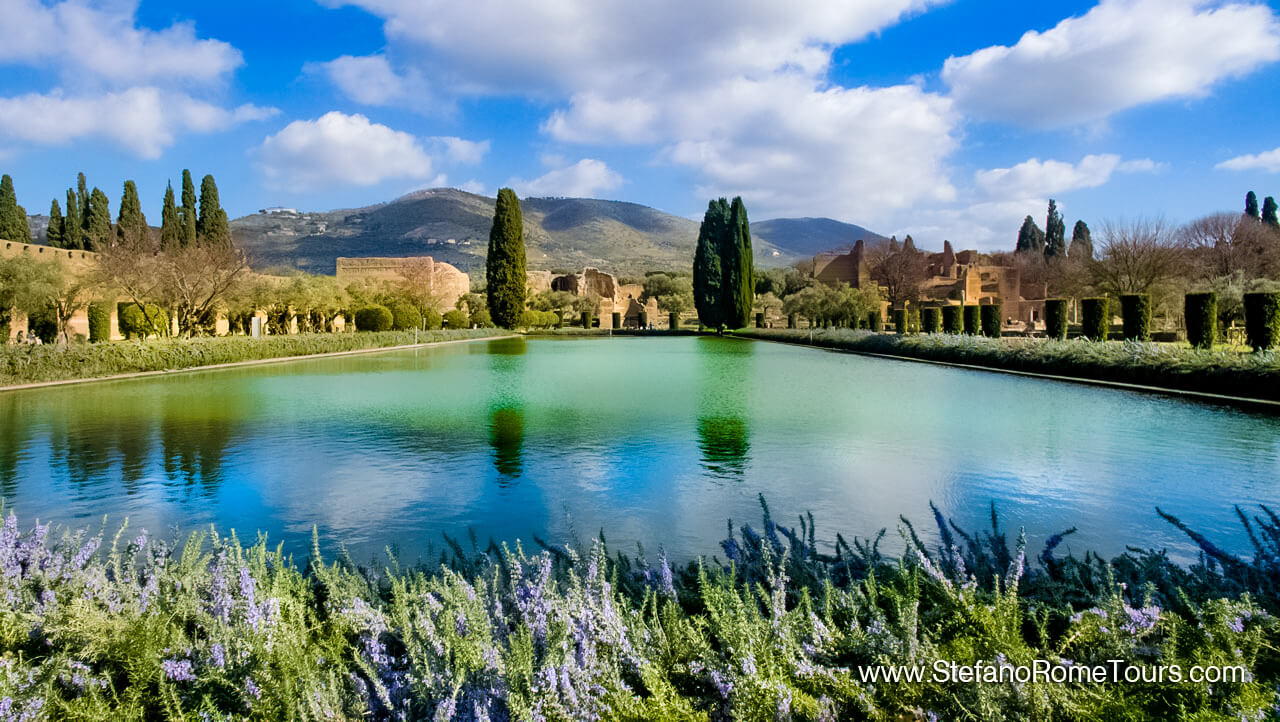
Great Baths:
The Great Baths (Grandi Terme) at Hadrian's Villa were part of the larger complex dedicated to leisure and wellness. These baths were not just functional but also served as social and recreational spaces for the residents of the villa.
The Great Baths featured typical elements of Roman bath complexes, including a series of cold and heated rooms (caldarium, tepidarium, frigidarium), gymnasiums, and open spaces for exercise. Elaborate mosaic floors, wall paintings, and stucco decorations adorned the interior, reflecting the luxury and sophistication associated with imperial Roman baths.
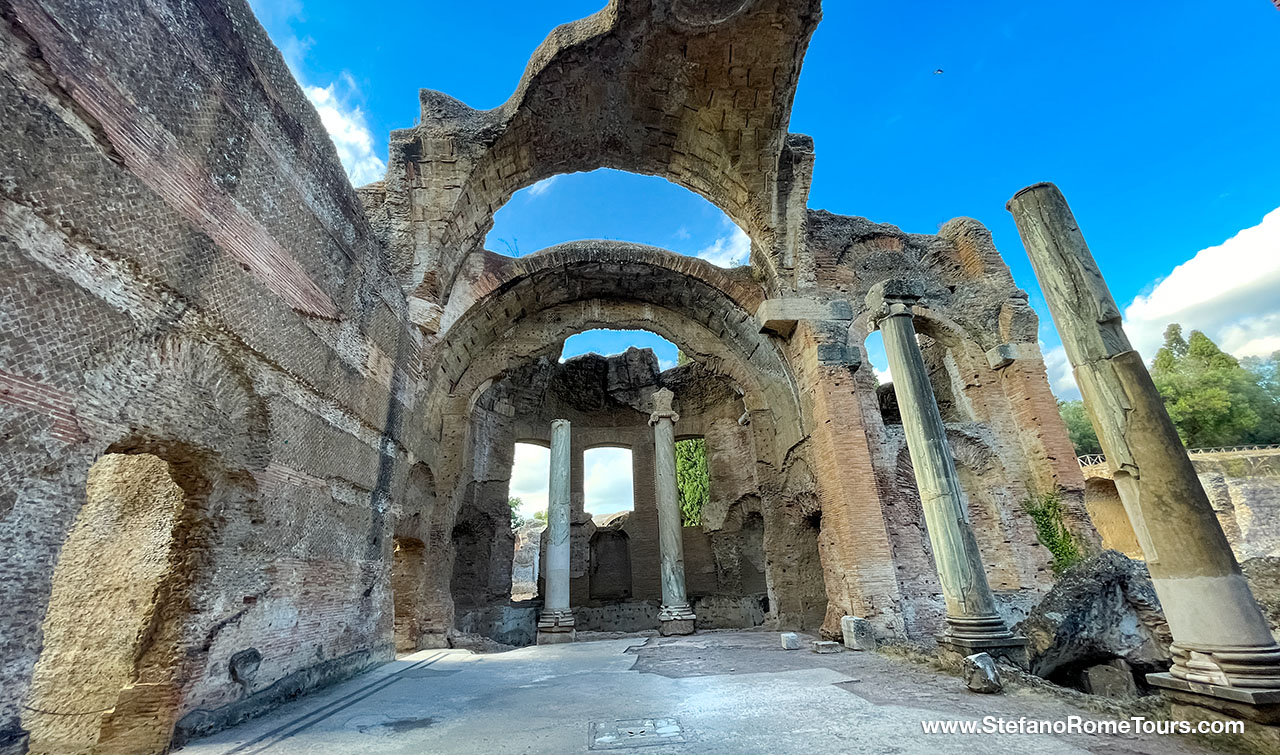
Maritime Theater:
The Maritime Theater is one of the most iconic and distinctive structures in Hadrian's Villa. It was designed to resemble an island villa and served as a private retreat for the emperor.
The circular structure is surrounded by a moat, creating the illusion of an island. The central building, accessed by a bridge or causeway, likely contained rooms for dining, relaxation, and entertainment. The design reflects Hadrian's love for architecture that blended functionality with theatricality, providing a secluded and picturesque escape within the larger villa complex.
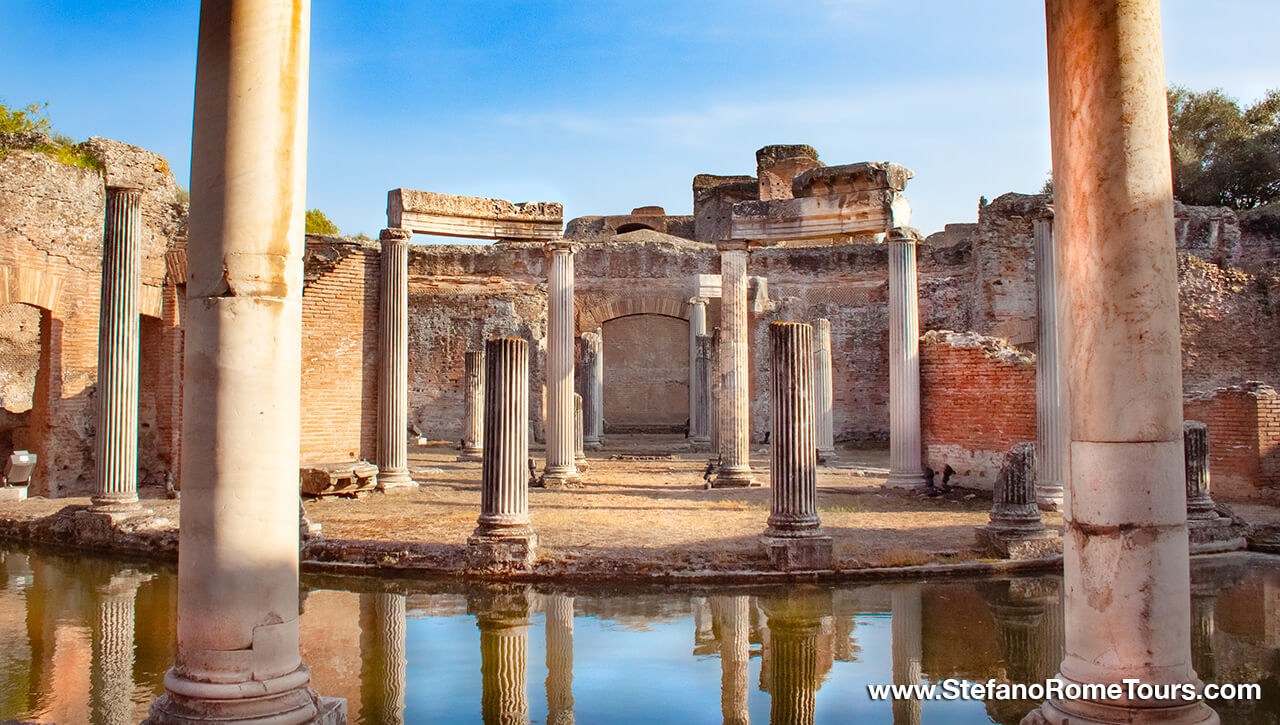
Canopus:
The Canopus at Hadrian's Villa is a large, rectangular pool surrounded by colonnades and adorned with statues. It is named after the ancient city of Canopus in Egypt and emulates the grandeur of Egyptian architecture.
The pool served both aesthetic and practical purposes, with its reflective surface enhancing the visual appeal of the surrounding structures. It was likely used for dining and leisure activities, further showcasing the multifunctional nature of Hadrian's Villa.
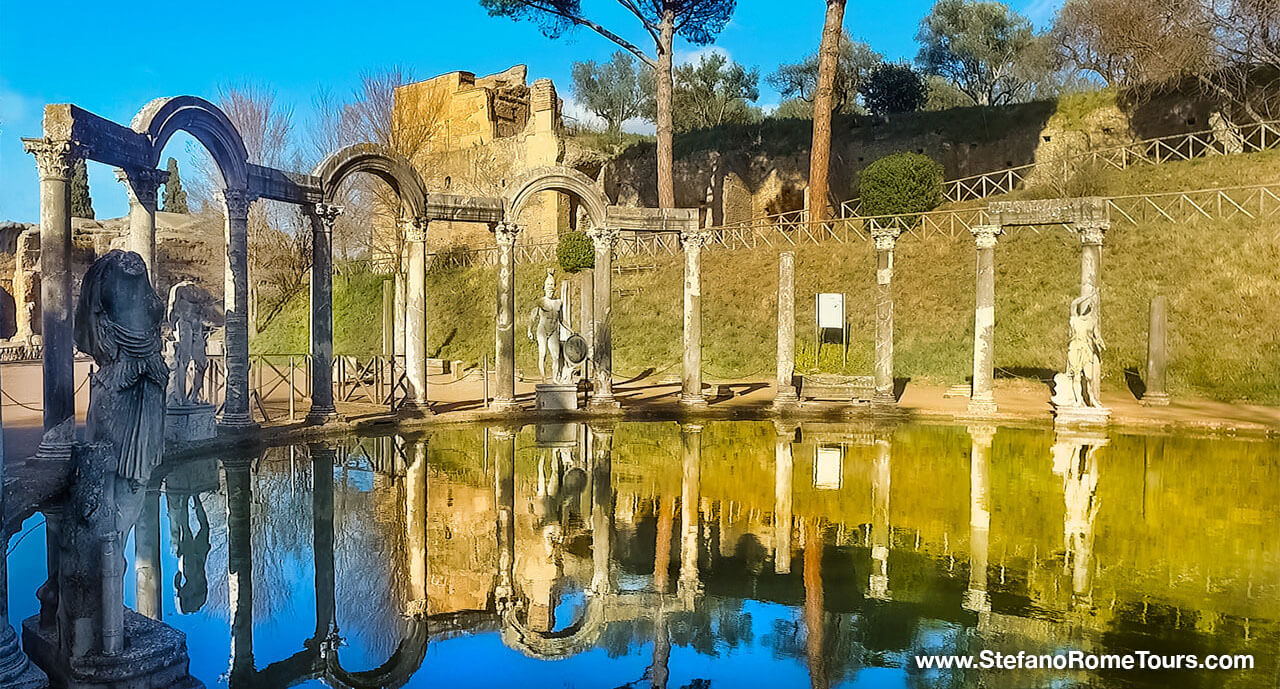
The Imperial Palace
The Imperial Palace was the primary residence within Hadrian's Villa, serving as the emperor's private quarters. It was the core of the villa's residential complex and administrative center.
The Imperial Palace was a vast complex with opulent halls, courtyards, and private apartments. The Piazza d'Oro (Golden Square) within the palace was adorned with exquisite mosaics and statues, emphasizing the grandeur of imperial life. The palace showcased a combination of architectural styles, incorporating elements from various regions of the Roman Empire and reflecting Hadrian's well-traveled and eclectic tastes.
Three Exedras
The Three Exedras are a group of three semicircular or rectangular structures arranged in close proximity, likely serving various functions within Hadrian's Villa. Each exedra featured a distinctive architectural design and may have served as meeting places, dining areas, or spaces for intellectual and philosophical discussions.
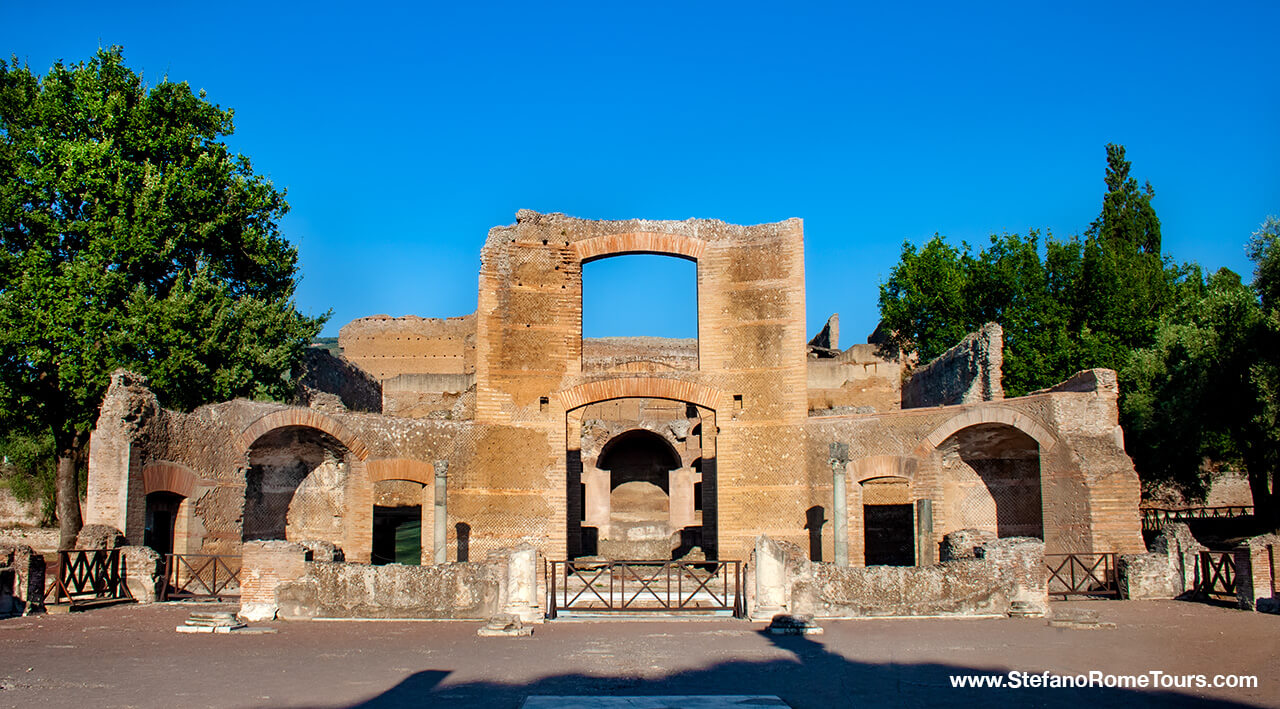
The Greek and Latin Libraries
The Greek and Latin Libraries at Hadrian's Villa were integral components of the larger scholarly and educational complex within the estate. These libraries reflect Emperor Hadrian's intellectual pursuits and his commitment to creating a retreat that encompassed not only luxury and leisure but also a space for learning and cultural enrichment.
Greek Library:
The structure likely featured shelves for scrolls and manuscripts, with seating areas for scholars and readers. Architectural details may have included columns, decorative friezes, and other elements reflecting Greek design. The Greek Library was a space where intellectuals and scholars could engage with Greek literature and philosophy.
Latin Library:
The Latin Library would have had a design akin to the Greek Library, with spaces for storage of scrolls, reading, and scholarly activities. Decorative elements would likely have included Roman architectural motifs, emphasizing the connection to Roman literature and intellectual traditions.
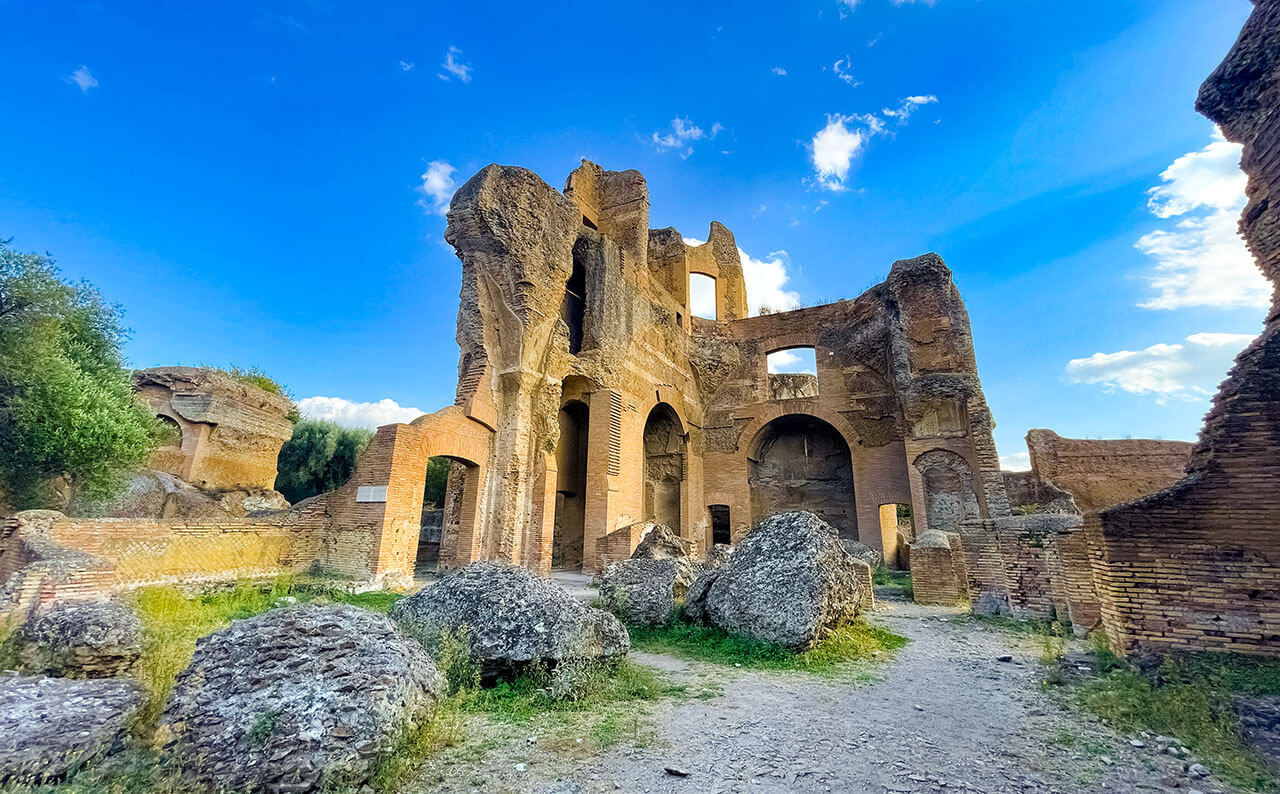
Hospitalia
Next to the libraries is the Hospitalia (origin of "hospitality"). The Hospitalia served as the designated space for hosting guests and accommodating visitors to Hadrian's Villa. The design of the Hospitalia would have been in line with the architectural style prevalent in the villa, including a series of rooms or suites for guests, each furnished with amenities for their comfort. The architecture may have featured decorative elements, frescoes, and other embellishments to convey a sense of luxury and refinement.
The most striking features to be admired today are the Roman mosaic floors with intricate geometric patterns such as interlocking circles, squares, rectangles, or other symmetrical shapes. Geometric patterns were not only aesthetically pleasing but also showcased the skill of the craftsmen who created them.
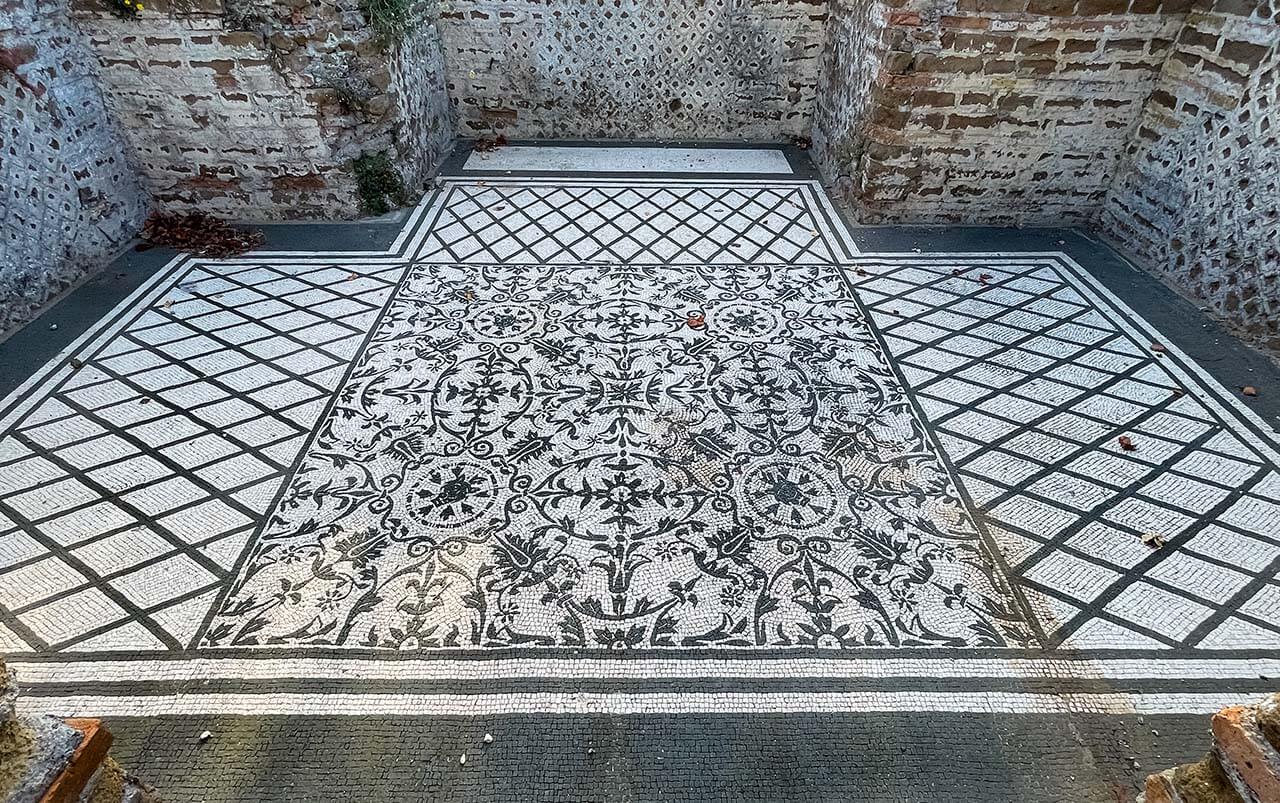
From Glory to Quarry: Hadrian's Villa After the Emperor
Following Hadrian's death in AD 138, his successors Antoninus Pius and Marcus Aurelius continued utilizing the villa. Evidence in the form of wall paintings dating from the reign of Septimius Severus in the early third century indicates that the villa remained in use during this period. Constantine, the last emperor associated with the villa, was known for taking artworks and other valuable items from the site. This marked the conclusion of imperial use.
Following Emperor Constantine, the villa gradually fell into a state of ruin and abandonment. Similar to many Roman monuments, the site faced various challenges during late antiquity. Firstly, the barbarians under Totila sacked the villa and the city itself. Later, the site was used as a quarry, extracting materials needed for building projects in Tivoli.
During the Renaissance Era, Cardinal Ippolito II d'Este, the governor of Tivoli in the mid-16th century ordered the redesign of the nearby Villa d'Este and utilized statues and other objects extracted from the ruins of Hadrian's Villa to adorn and decorate his new creation.
In the 17th century, there was a renewed interest in the site, leading to continuous excavations. Treasures unearthed during these excavations found their way into the private collections of Cardinals and Popes. Formal excavations of Hadrian’s Villa began in 1870 and still continue today, yielding numerous artifacts like marble statues, frescoes, mosaics, and intricate architecture.
The villa’s historical and architectural significance earned it recognition as a UNESCO World Heritage Site, emphasizing its importance in the context of world history and cultural heritage.
Villa d'Este:
Cardinal d'Este's Vision of Renaissance Elegance
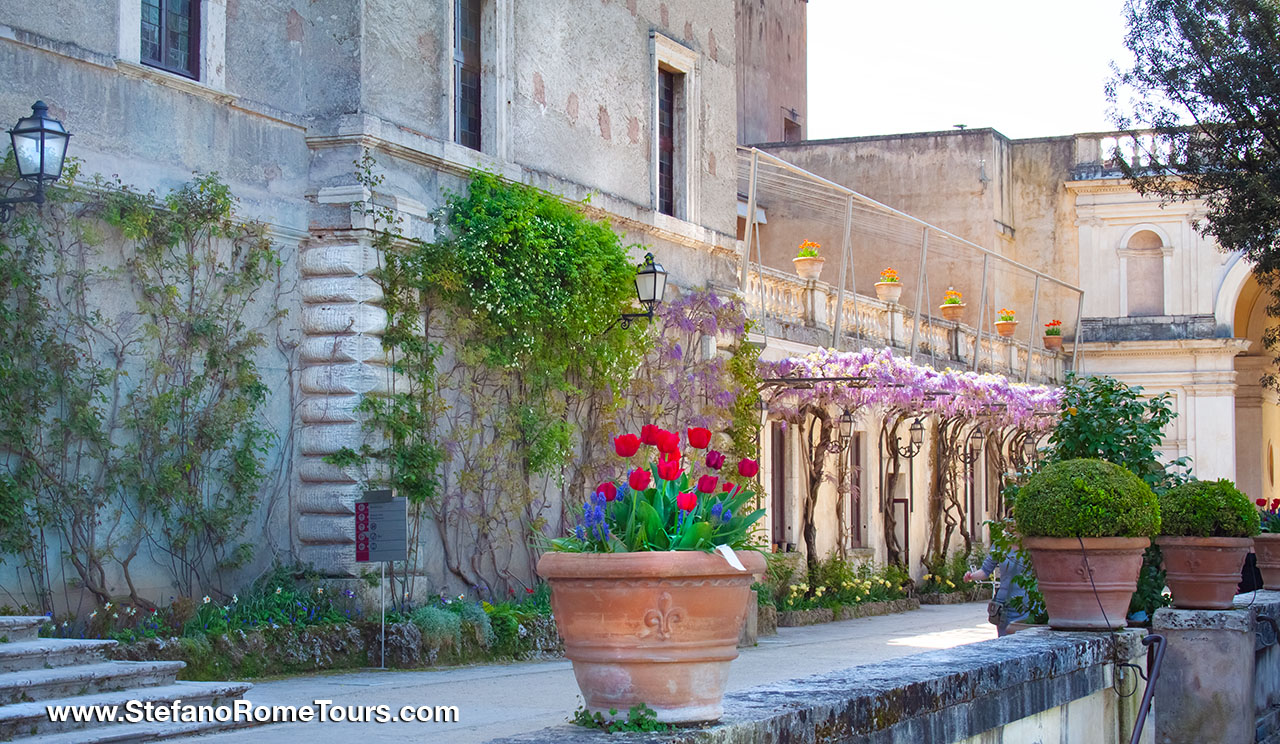
In the 16th century, Cardinal Ippolito II d'Este, a prominent member of the influential d'Este family and the governor of Tivoli, endeavored to establish a residence that could match the splendor of ancient Rome. This aspiration came to life in the exquisite form of Villa d'Este, an unparalleled achievement in Renaissance architecture and landscaping.
The position of Governor of Tivoli came with a designated residence situated in a former Benedictine convent built in the 9th century on the grounds of an ancient Roman villa. In 1256, this property was generously donated to the Franciscan order.
Though the residence wasn't spacious enough for a prominent Cardinal like d'Este, it offered sweeping views of the countryside, including Hadrian's villa, and a plentiful natural water supply ideal for fountains and gardens.
Cardinal d'Este, a man of refined taste and artistic sensibilities, sought to create a place that would not only serve as his residence but also as a testament to his status and influence. The construction of the villa was a combination of political, personal, and aesthetic reasons. His motivations were shaped by the socio-political context of the time and his own aspirations for creating a residence that would stand as a testament to his status and refined tastes.
To enhance this estate, Cardinal d'Este enlisted the expertise of Pirro Ligorio, a distinguished classical scholar well-versed in Roman sites such as Villa Hadriana. His mission was to conceive a new villa and garden that surpassed anything the Romans had created. Abundant supplies of marble and statuary were sourced from the ruins of Hadrian's villa, enriching the grandeur of the envisioned project.
The villa, renowned for its stunning terraced gardens, elaborate fountains, and intricate water fountains that evoke a sense of awe, was conceived as a place where the cardinal could entertain and impress dignitaries, showcasing the family's wealth, cultural sophistication, and influence. The impressive fountains, relying on innovative hydraulic engineering, showcased the technical prowess of the time.
Villa d’Este’s Connection to Ancient Rome:
The Renaissance era was characterized by a revival of interest in classical antiquity, and many patrons sought to connect their projects with the grandeur of ancient Rome. Cardinal d'Este, with his family's historical ties to ancient Rome, aimed to evoke the spirit of classical antiquity in the design and decoration of Villa d'Este. The use of classical motifs and references in the villa and gardens reflects this cultural revival.
Like many Renaissance patrons, Cardinal d'Este was a patron of the arts and a lover of culture. The villa became a canvas for artistic expression, featuring frescoes, stucco work, and sculptures that celebrated the cardinal's appreciation for beauty and aesthetics. The Hall of the Fountain, for example, with its stunning frescoes, is a testament to the cardinal's commitment to the arts.
The Villa:
Explore the impressive villa that serves as the cardinal's once-sumptuous retreat. The villa itself boasts intricately adorned rooms, frescoed ceilings, and lavish decor that reflect the opulence of the Renaissance era.

The Symphony of Fountains of Villa d’Este
The highlight of Villa d'Este is its impressive system of fountains, driven by the force of gravity without the aid of pumps. The Fountain of Neptune, the Oval Fountain, and the Hundred Fountains are just a few examples of the mesmerizing water displays that adorn the gardens. These fountains, adorned with classical and mythological motifs, reflect the cardinal's desire to connect with the grandeur of ancient Rome and its cultural heritage.
Here are some of the best fountains to see in Villa d’Este
Fountain of Rometta:
The Fountain of Rometta is a central feature with a sculptural representation of the city of Rome on a boat-like structure. The boat is surrounded by water jets and is often interpreted as an allegory of the Tiber River.
Hundred Fountains (Cento Fontane):
The Hundred Fountains is a spectacular water feature consisting of a long pathway with fountains set against a backdrop of greenery adorned with a multitude of small jets that form a captivating visual display.
The fountains are intricately designed with a rhythmic arrangement of water jets, creating a mesmerizing pattern. The design reflects a symmetrical layout, and the gentle sound of flowing water contributes to the tranquil ambiance of the garden.
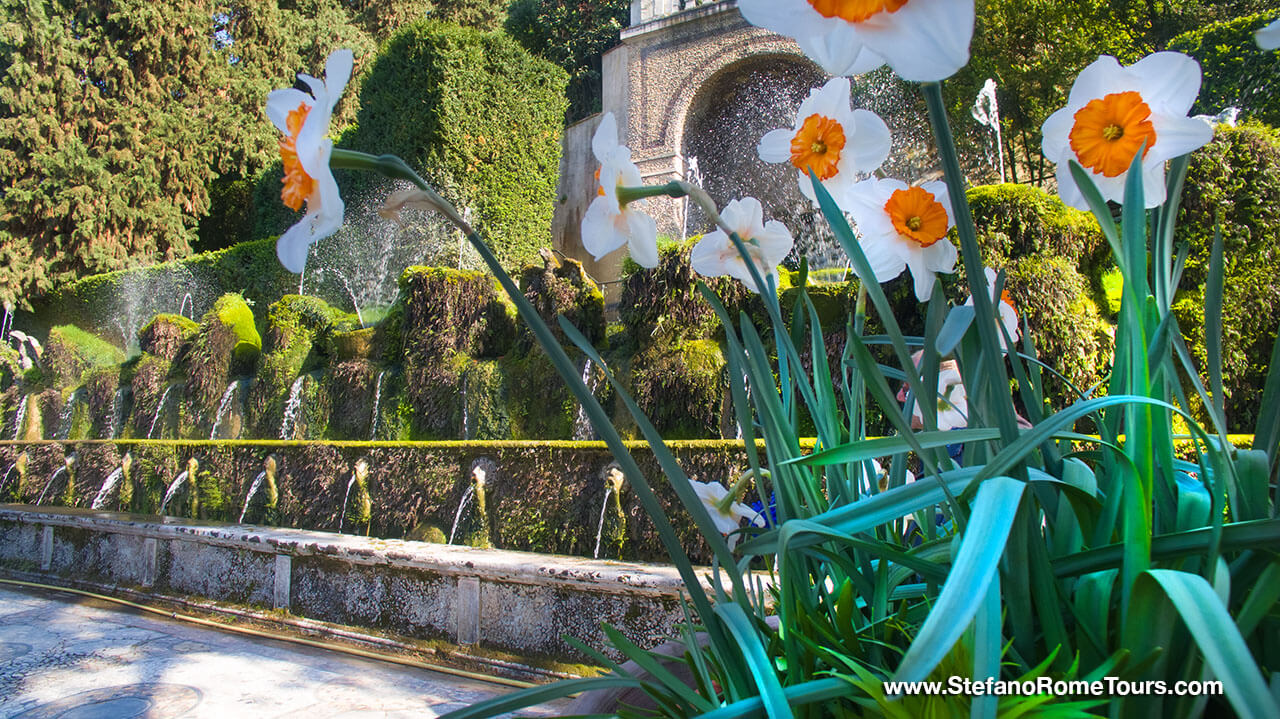
Oval Fountain:
The Oval Fountain is a central element in the garden, featuring an oval-shaped basin surrounded by balustrades and sculptures. The water in the oval basin reflects the surrounding greenery and sculptures, creating a visually serene and harmonious scene.
Fountain of Neptune:
Originally conceptualized by Bernini to complement Pirro Ligorio's plans, the unfinished fountain, commissioned after Ippolito d’Este's death, featured a cascading design originating from the Fountain of the Organ forecourt. Neglected over time, Bernini's work was lost, and in the 1930s, Attilio Rossi and Emo Salvati crafted the current fountain.
It showcases scenographic water features with high jets and sprays symmetrically arranged around a central cascade reminiscent of Bernini's original design. The bust of Neptune in the grotto at the waterfall's base gives the fountain its name, with various basins allowing water to gently flow into pools on the flat area below.
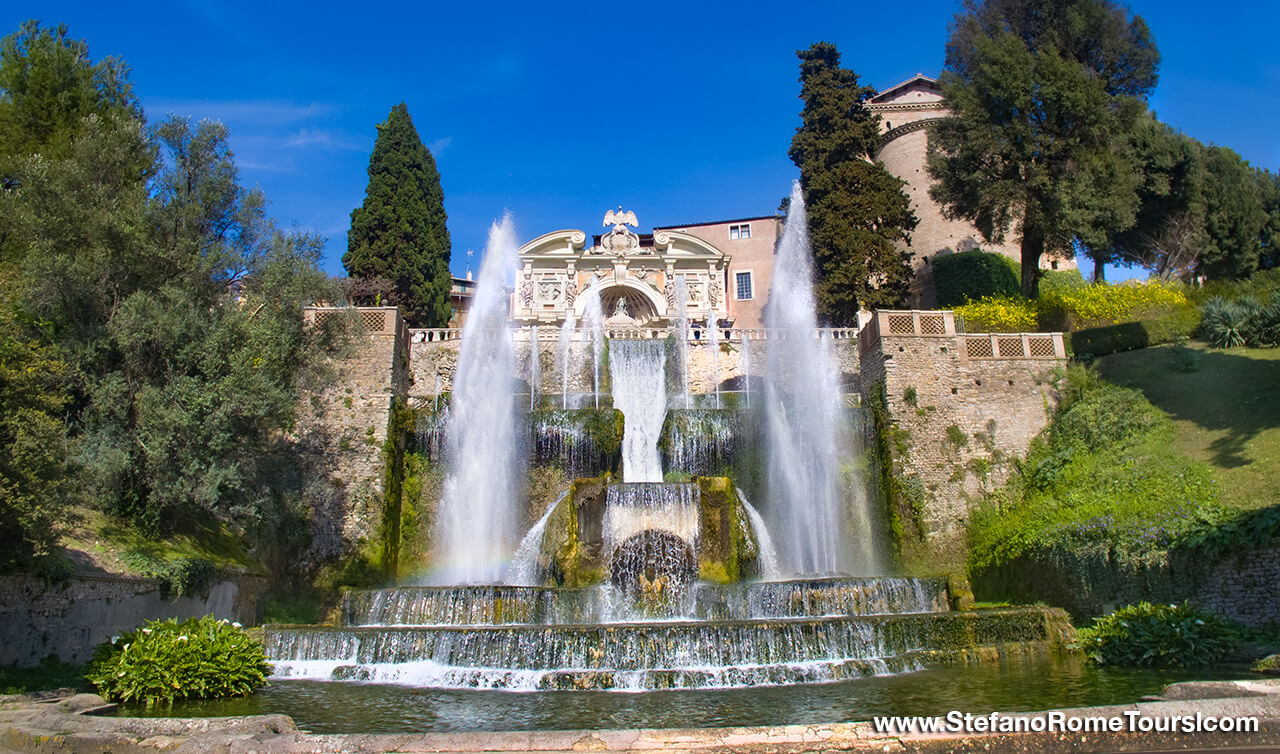
Fountain of the Organ:
Located above the Neptune Fountain, the Fountain of the Organ is an ingenious blend of engineering and artistry. The organ's pipes are integrated into the architectural setting, and the flowing water not only produces musical notes but also enhances the sensory experience of the garden.
Fountain of the Dragons:
The fountain's design is symbolic, with dragons representing mythical creatures associated with water. The dragons are often depicted in various poses, creating a dynamic and animated effect. The movement of water from the dragon sculptures adds a dynamic and playful aspect to the overall composition.
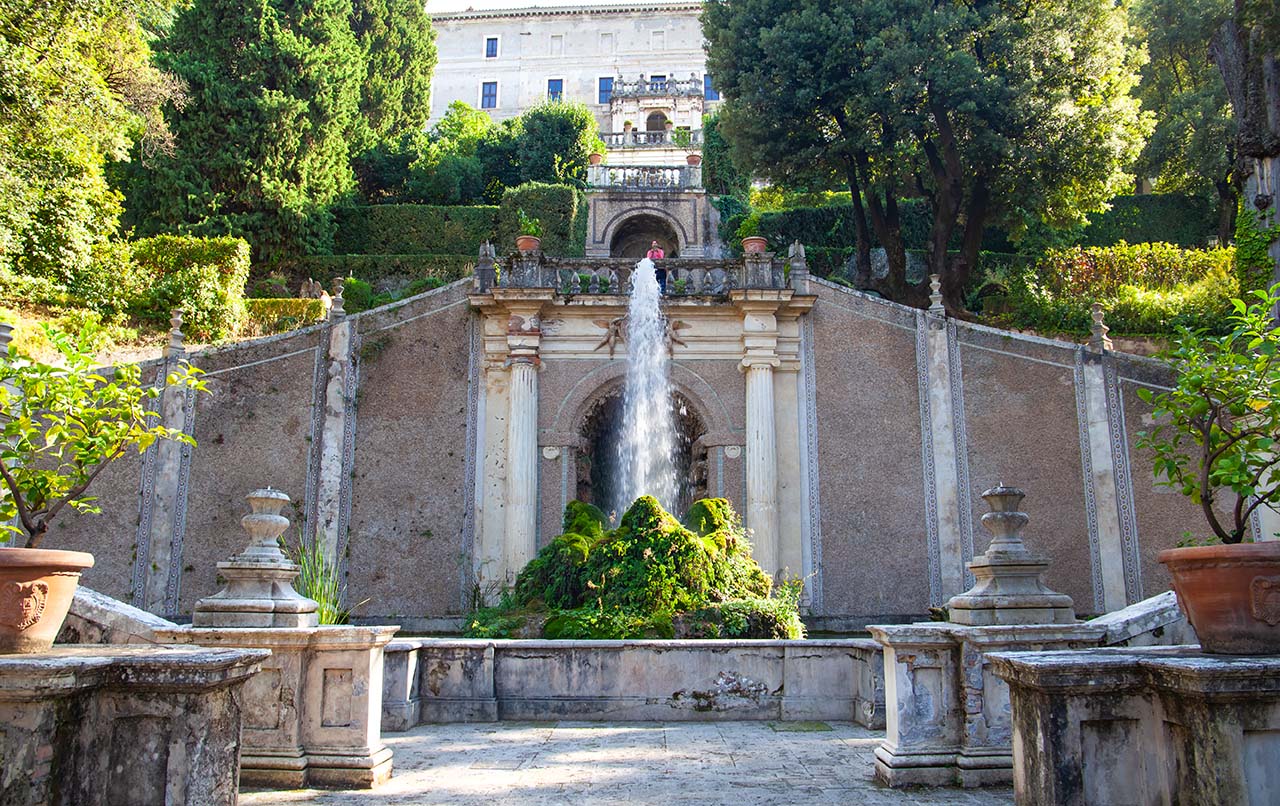
When visiting Tivoli, one can’t help but marvel at the enduring legacies of Hadrian's Villa and Villa d'Este. These architectural marvels, separated by centuries yet united in their grandeur, speak to the indomitable human spirit and its timeless pursuit of leaving an indelible mark on history. Hadrian's imperial retreat and Cardinal Ippolito II d'Este's Renaissance masterpiece showcase the convergence of artistic vision and cultural influences, testifying to the enduring power of dreams carved in stone.
As we stand amidst ancient ruins and manicured gardens, we carry with us the echoes of their aspirations, embedded in the very stones that continue to narrate their tales through the ages.
Thank you for reading our Tivoli travel blog and for choosing Stefano Rome Tours for your private Tours in Italy. We look forward to showing you amazing places in Italy!
